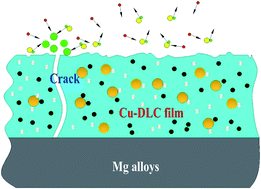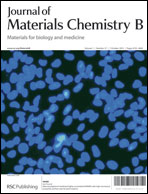Mechanical and biomedical properties of copper-containing diamond-like carbon films on magnesium alloys
Abstract
The high susceptibility to corrosion of magnesium alloys may lead to their rapid degradation in the human body and thus greatly jeopardizes their applications as potential biodegradable bone implant materials. To improve their mechanical properties and biocompatibility, Cu-DLC films were coated on Mg alloys in a mid-frequency dual-magnetron system. The anti-corrosion properties, frictional properties, and degradation behaviours of these coated films were then investigated as a means of evaluating their protective effects on the Mg alloys. The results exhibited a rather low coefficient of friction (COF) μ in simulated body fluid conditions for the film doped with a:C–Cu8.7% when compared with the Cu-DLC films doped with other contents. This is mainly because the a:C–Cu8.7% film gives higher hardness, lower intrinsic stress, and more superior adherence. Tests also suggested that the hemocompatibility and protective-ability of the Mg alloys deposited with the a:C–Cu8.7% film were greatly improved when compared with their uncoated counterparts. Analysis of the mechanism involved with the biocompatibility of Cu-DLC films revealed that adequate diffusion of nanosized Cu crystallites into the DLC films on the Mg alloys can result in a high ID/IG ratio, a relatively smooth surface, and a low coefficient of friction. Such diffusion effectively suppresses the release of Mg ions from the Mg alloys, and subsequently improves the film hemocompatibility and protective-ability.


 Please wait while we load your content...
Please wait while we load your content...